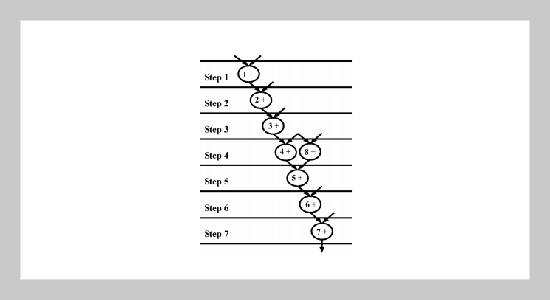REFERENCES
- [1] Monterio, J., Devadas, S., Ashar, P. and Mauskar, A., “Scheduling Technique to Enable Power Management,” Proceedings of IEEE/ACM Design Automation Conference, pp. 349�352 (1996).
- [2] Chen, C. and Sarrafzadeh, M., “Power Management Scheduling Technique for Control Dominated High Level Synthesis,” Proceedings of IEEE Design, Automation and Test in Europe Conference and Exhibition, pp. 1016�1020 (2002).
- [3] Cong, J., Wei, J. and Zhang, Y., “A Thermal-Driven Floorplanning Algorithm for 3D ICs,” Proceedings of IEEE/ACM International Conference on ComputerAided Design, pp. 306�313 (2004).
- [4] Basu, A., Lin, S. C., Wason, V., Mehrotra, A. and Banerjee, K., “Simultaneous Optimization of Supply and Threshold Voltages for Low-Power and High-Performance Circuits in the Leakage Dominant Era,” Proceedings of IEEE/ACM Design Automation Conference, pp. 884�887 (2004).
- [5] Mukherjee, R., Memik, S. O. and Memik, G., “Temperature-Aware Resource Allocation and Binding in High-Level Synthesis,” Proceedings of IEEE/ACM Design Automation Conference, pp. 196�201 (2005).
- [6] Chu, C. C. N. and Wong, D. F., “A Matrix Synthesis Approach to Thermal Placement,” IEEE Trans. on Computer-Aided Design of Integrated Circuits and Systems, Vol. 17, pp. 1166�1174 (1997).
- [7] Skadron, K., Stan, M. R., Sankaranarayanan, K., Huang, W., Velusamy, S. and Tarjan, D., “Temperature-Aware Microarchitecture,” Proceedings of IEEE International Symposium on Computer Architecture, pp. 2� 13 (2003).
- [8] Tsai, C. and Kang, S., “Standard Cell Placement for Even On-Chip Thermal Distribution,” Proceedings of ACM International Symposium on Physical Design, pp. 179�184 (1999).
- [9] Ramanujam, J., Deshpande, S., Hong,J. and Kandemir, M., “A Heuristic for Clock Selection in High-Level Synthesis,” Proceedings of IEEE Asia and South Pacific Design Automation Conference, pp. 414�419 (2002).
- [10] Hwang, C. T., Lee, J. H. and Hsu, Y. C., “A Formal Approach to the Scheduling Problem in High Level Synthesis,” IEEE Trans. on Computer-Aided Design of Integrated Circuits and Systems, Vol. 10, pp. 464�475 (1991).
- [11] Papachristou, C. A. and Konuk, H., “A Linear Program Driven Scheduling and Allocation Method Followed by an Interconnect Optimization Algorithm,” Proceedings of IEEE/ACM Design Automation Conference, pp. 77�83 (1990).
- [13] Shin, D. and Choi, K., “Low Power High Level Synthesis by Increasing Data Correlation,” Proceedings of IEEE International Symposium on Low Power Electronic Design, pp. 62�67 (1997).
- [14] Balakrishnan, M. and Marwedel, P., “Integrated Scheduling and Binding: A Synthesis Approach for Design Space Exploration,” Proceedings of IEEE/ACM Design Automation Conference, pp. 68�74 (1989).
- [15] Lee, C., Potkonjak, M. and Maggione-Smith, W. H., “MediaBench: A Tool for Evaluating and Synthesizing Multimedia and Communications Systems,” Proceedings of IEEE International Symposium on Microarchitecture, pp. 330�335 (1997).
- [16] Skadron, K., Abdelzaher, T. and Stan, M. R., “Control-Theoretic Techniques and Thermal-RC Modeling for Accurate and Localized Dynamic Thermal Management,” Proceedings of IEEE International Symposium on High-Performance Computer Architecture, pp. 17�28 (2002).
















